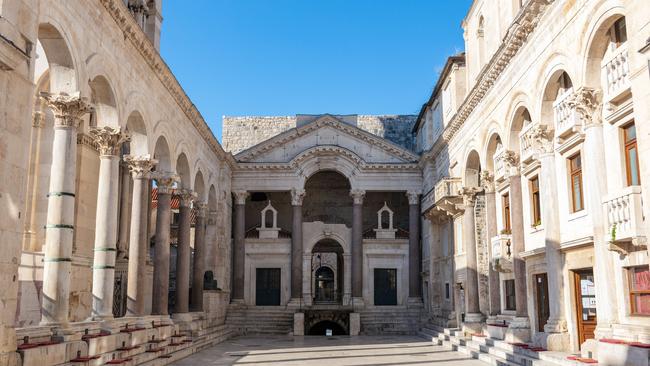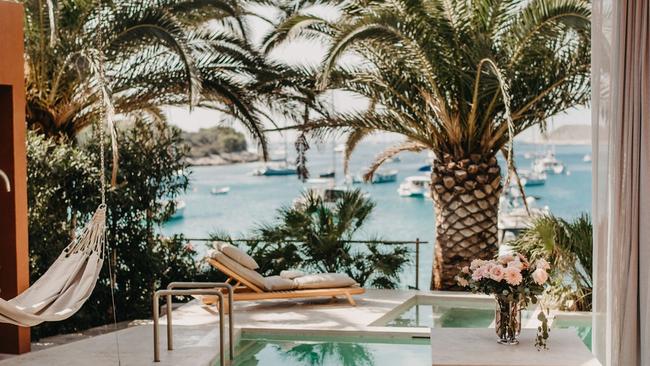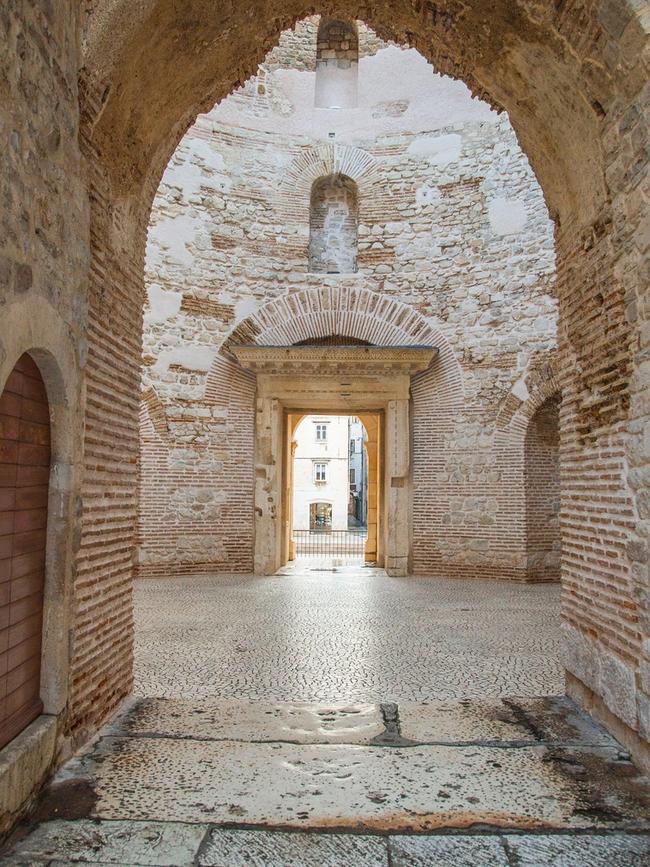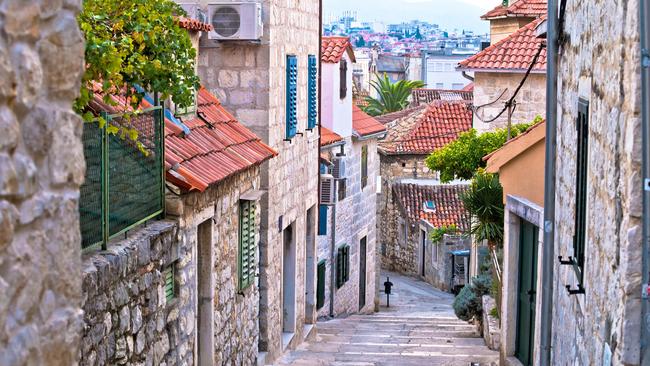Why Split is Croatia’s best kept secret
This port city is regularly voted Europe’s most beautiful and has an extraordinary ancient history built into its walls.

Dino Ivancic looks up at the dark sky where clouds are racing and spitting spring rain. The bura, or north wind, has given way to the jugo, or southern gale, known as the sirocco in Italy.
“The southern wind affects people, makes them angry,” he says. “In the Middle Ages, no decisions could be made in the Republic; no contracts could be signed if the jugo was blowing. It was thought to affect people’s judgement.”
It is an atmospheric morning to be exploring the port of Split, Croatia’s second-largest city and regularly voted one of Europe’s most beautiful.

It’s hugely popular in summer as one of the great sailing capitals of the Mediterranean. I am travelling before the busy season, and arrived by accident when a ferry was cancelled due to a storm. Luckily, Split has a secret.
It’s one of the most intriguing historical destinations in the Mediterranean, having been built into the vast remains of the palace of the ancient Roman emperor Diocletian. In the Middle Ages, the corridors became roads, temples turned into churches, storage rooms into monasteries. These days, historic spaces hold pizza parlours, cafes and pubs.

Dino leads me into the labyrinth of Greek limestone and Italian marble, past towering columns that overshadow gelato bars.
He explains it is the largest surviving palace complex from the Roman world, with more than a third of its area intact, outstripping in grandeur any ruin that survives in Rome, let alone other great outposts of the Empire – Ephesus, Alexandria or Istanbul.
As Rose Macaulay puts it, in her 1953 classic book Pleasure of Ruins (1953), Split is today “a town enclosed in a palace”, which has “produced a stupendous effect on those who have visited it. It has been, possibly, the most serviceable ruin in the world”.
I’m embarrassed to admit to Dino that I know almost nothing about the palace or Diocletian. I’ve written a few books involving the ancient Greco-Roman world without Split ever crossing my horizon.
This is because they dealt with the first two centuries of the Roman Empire, when the Emperors included marquee names such as Tiberius, Caligula and Nero and, in the second century, Hadrian, Marcus Aurelius and Commodus.
Diocletian ruled at a less mythologised time, the end of the third century AD, but was a pivotal figure, and one who Dino and Croatians are patriotically proud of.
The son of a slave, he rose through the army ranks to become general at a time when Rome had about 50 emperors in as many years. After seizing power in 284 AD, he managed to stabilise the empire and rule for more than 20 years, thanks to the novel idea of splitting power with a second Augustus and two deputy Caesars.
He also declared himself a god in the Oriental style, forcing all visitors to bow before him and avert their eyes.

In 305 AD, Diocletian made another startling decision: he voluntarily retired as emperor and retreated to the lovely stretch of the Dalmatian coastline where he had been born in the once-thriving city of Solona.
For 10 years beforehand, he had been building a palace on the peninsula of Split that resembled a square legionnaire camp, with four gates and towers on each corner, a barracks for his personal guards and luxurious private chambers with burbling fountains, exquisite marble, and treasures from around the empire, including a dozen ancient Egyptian sphinxes (three of them survive).
He enjoyed his retirement for nearly a decade, spending his time growing cabbages. “The average age of an emperor when he died was 32,” Dino declares proudly. “Never from natural causes. Diocletian was 72. And he died in bed.”

In the 7th century, inhabitants from the surrounding countryside fled to its thick walls to escape Slavic invaders, beginning the palace’s new urban life and transforming its chambers into residences. Dino grew up surrounded by the ruins, which now lie about 100m from the waterline, and knew every stone. “My family has been in Split for 1200 years,” he declares, “so I think I am kind of stuck here.”
Some of the most extraordinary spaces are underground, with barrel-vaulted stone ceilings that housed olive oil factories and storage areas (As with almost everywhere in Croatia, there is a Game of Thrones reference; Daenerys Targaryen keeps her dragons there when in Meereen). The chambers survived the past 1700 years for a different reason.

“You see those holes?” Dino says, pointing to the ceiling where shafts of light shine down. “They were cut in the Middle Ages, when this whole structure was turned into a giant latrine.” In the 1970s, teams from the former Yugoslavia and the University of Minnesota cleared out the space, which was beautifully intact, and filled with odd relics, including three of the sphinxes that had been broken by Christians and dumped as pagan idols. “You see the layers – 20,000 items were discovered in petrified sh*t. Sh*t saved this palace.”
But the most appealing part of the palace is how it has become part of the city. Today above ground, some 220 inhabited structures are embedded within its ancient remains, including the Hotel Vestibul Palace, where the contemporary-style breakfast room and some of the suites are surrounded by original Roman walls.

About 3000 people still live in the palace’s former passageways, casually coexisting with the 17th century architecture. Fragments of its former glory are everywhere, lying in gardens and embedded in walls. There is even a Corinthian column pediment rising from one sidewalk that doubles as a handy bar counter for locals gathering at dusk.

I enjoy the way the palace has become a backdrop to everyday life. That night, as rain begins to pound down, I make my way along the slippery limestone to Pizzeria Portas, a cosy pizza restaurant a stone’s throw from one of the gates, and down a pepperoni pie and glass of Croatian red wine while rubbing shoulders with the ancient Roman stone walls. This is time travel at its best.
In the know
Another of the charming medieval port towns that has recently taken off as a destination in Croatia is Hvar, the embarkation point for a constellation of islands.
One of the most intriguing mixes of old and new is the tiny Zori Timeless Hotel, which opened in April on the nearby island of Sveti Klement, popular known as Palmizana.
Only a few minutes from Hvar by speedboat, it is an extension of one the coast’s most beloved family-run restaurants, Zori, set above the sparkling Vinogradisce Bay. It’s a complete departure for the area.
There are only four rooms, each individually designed with private pools and panoramic views. Despite the regal level of luxury, the casual family atmosphere lingers, with Renato and Iva Tomlinovic managing the meals and every detail of the small operation.


To join the conversation, please log in. Don't have an account? Register
Join the conversation, you are commenting as Logout